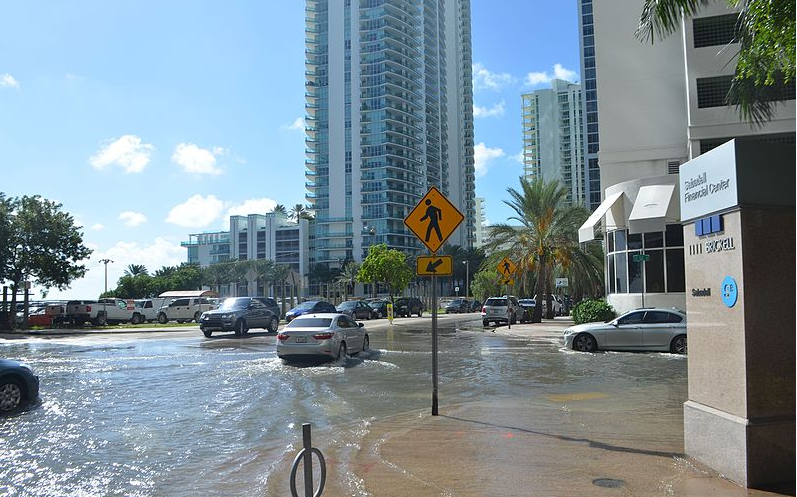Florida has been identified as a US states that will be under threat from global warming. Future challenges come in the form of more intense hurricanes and tropical storms, sea-level rises and extreme heat. “Of the total of 4.2 million US citizens that live at an elevation of less than 1m 20, 2.4 million of them live in South Florida. By 2045, nearly 64,000 homes in Florida face flooding every other week, with roughly half in South Florida and 12,000 in Miami Beach alone.” Points out Victoria Scalongne, Senior Real Estate Analyst at Indosuez.
Although these predictions depend on how high sea- levels are modelled to rise by the end of the century, in her opinion, it is clear that the housing market and infrastructure of the low-lying peninsula stands a very big chance to be negatively impacted during the course of the life-time of a mortgage taken out today (30 years).
In Miami, a property on or near the water currently fetches a premium and the cheaper real estate in the metro can in general be found on higher ground further inland. “With sea levels rising, this pricing scenario is likely to be inversed in the medium term, with higher ground fetching a premium. Whether it’s climate change, fashion, or real estate returns, developers have been reported to be buying up properties in lower value, higher elevation locations like Little Haiti, redeveloping them and letting them out at increased rents.” She mentions adding th (Scientific American). The median list price for all homes in this neighbourhood increased by 35% from January 2018 to January 2019, while the same indicator stayed flat for Miami Beach over the same period and only increased by 8% for Miami as a whole (Zillow). In Key Biscayne, on the other hand, the median list price in December 2015 was USD2.3 million, by January 2019, this stood at USD 1.54 million, a 33% drop.Florida ha sido identificada como un estado de los Estados Unidos bajo la amenaza del calentamiento global. Los desafíos futuros se presentan en forma de huracanes y tormentas tropicales más intensas, el aumento del nivel del mar y el calor extremo.
En Miami, una propiedad en o cerca del agua actualmente cuesta una prima y las propiedades inmobiliarias más baratas en la zona en general se pueden encontrar en terrenos más altos en el interior. “Con el aumento del nivel del mar, es probable que este escenario de precios se invierta en el mediano plazo”, comenta Scalongne añadiendo que ahora, los desarrolladores están comprando propiedades de menor valor, en lugares de mayor elevación como Little Haiti, reurbanizándolas y dejándolas a precios más elevados.
Según su investigación, el precio de lista promedio para todas las casas en este vecindario aumentó en un 35% desde enero de 2018 hasta enero de 2019, mientras que el mismo indicador se mantuvo estable para Miami Beach durante el mismo período y solo aumentó en un 8% para Miami en su conjunto. En Key Biscayne, por otro lado, el precio de lista promedio en diciembre de 2015 era de 2,3 millones de dólares, mientras que para enero de 2019, era de 1,54 millones, una caída del 33%.
The Florida housing market has traditionally not only been driven by local demand, but by retirees, people escaping cold regions, job seekers and the ebb and flow foreign investors (mainly South American concentrating on the condo market). It has also historically been quite a volatile housing market, relative to other locations. Scalongne notes that although this cycle has not been characterised by overbuilding as in period preceding 2006 (see chart above), and fundamentals are sound, any downturn in the real estate sector will have a profound impact on the economy, as the real estate sector is estimated to represent around 15% of US GDP. “Anyone thinking of investing in the short term has to think that we are in late cycle conditions, and anyone investing in the long term cannot ignore the potential negative impact that climate change could have on this part of the world. Instead of “location, location, location”, the new real estate motto could in the future be “elevation, elevation, elevation.” She concludes.


